Top speed 206 km/h Length 11 m | Wingspan 14 m First flight November 12, 1932 Designer Geoffrey de Havilland | |
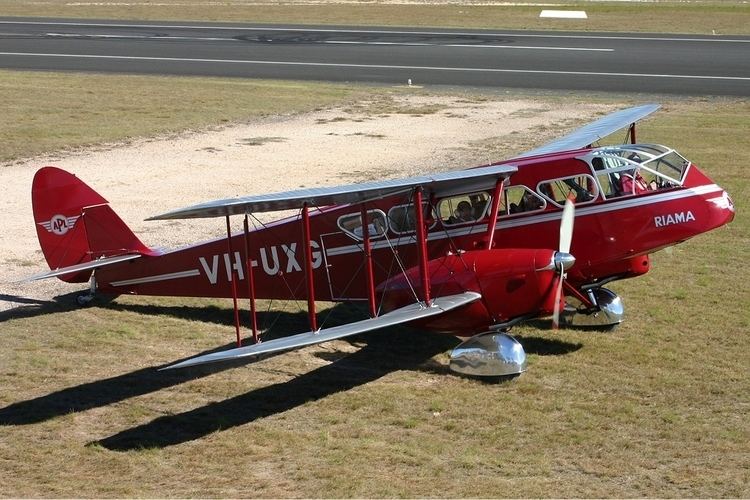 | ||
Smt de havilland dragon dh84 1930s plane at barton 17 09 16
The de Havilland DH.84 Dragon was a successful small commercial aircraft designed and built by the de Havilland company.
Contents
- Smt de havilland dragon dh84 1930s plane at barton 17 09 16
- Design and construction
- Operational service
- Accidents and incidents
- Variants
- Operators
- Military operators
- Civil Operators
- Specifications DH84 Dragon 1
- References
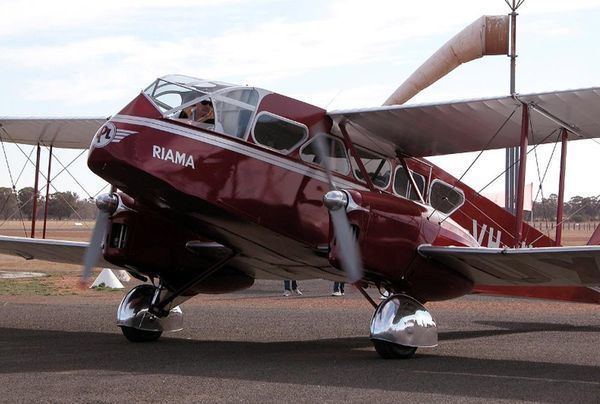
Design and construction
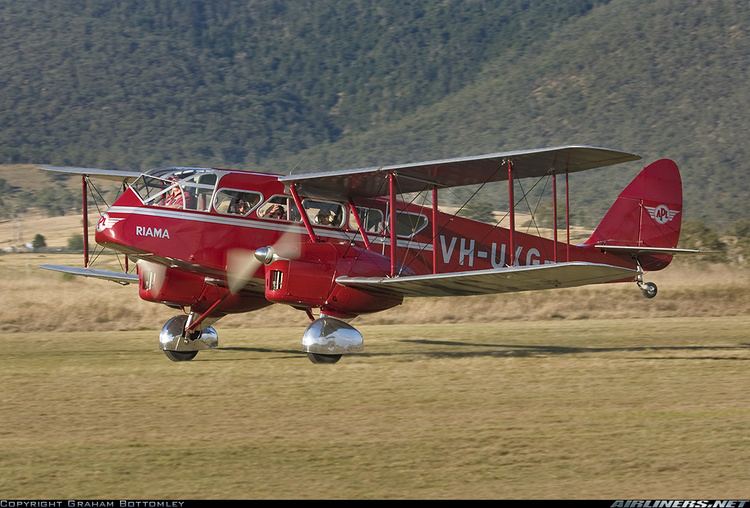
Following the commercial success of its single-engined de Havilland Fox Moth that had first flown in March 1932, that aircraft's original commercial operator Hillman's Airways requested that a larger twin-engined version be built. It was a simple, light design with a plywood box fuselage using the same type of engine and similar outer wing sections of the earlier single-engined aircraft. It was originally designated the DH.84 "Dragon Moth" but marketed as the "Dragon". The prototype first flew at Stag Lane Aerodrome on 12 November 1932, it and the next four aircraft were delivered to Hillman's which started a commercial service in April 1933. It could carry six passengers, each with 45 lb (20 kg) of luggage on the London-Paris route on a fuel consumption of just 13 gal (49 l) per hour. The wing panels outboard of the engines could be folded for storage.
Operational service
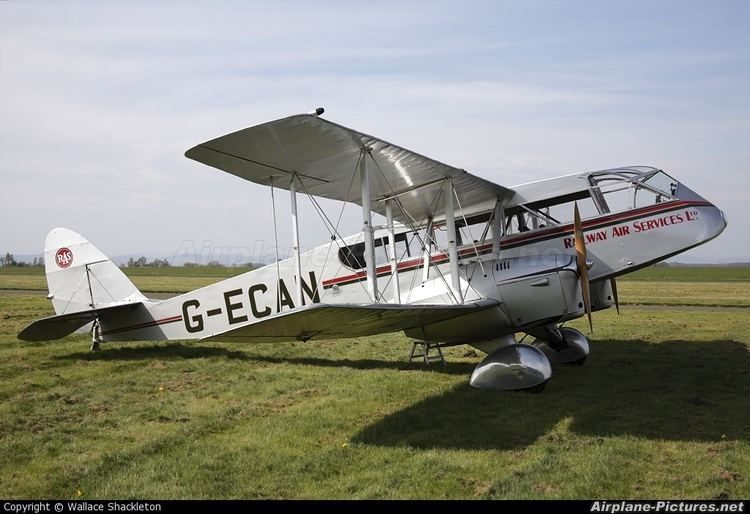
The Dragon proved very attractive as a short-haul low capacity airliner and was soon in service worldwide. From the 63rd aircraft late in 1933, the Dragon 2, with improvements including individually framed windows and faired undercarriage struts, was produced. Even though these changes were largely cosmetic the streamlining improved the aircraft's speed by about 5 mph (8 km/h), allowed 250 lb (113 kg) more payload to be carried and added 85 mi (137 km) of range.
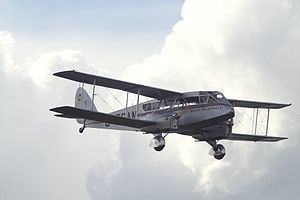
British production of the DH.84 ended at the 115th aircraft, when it was replaced on the assembly line by the more powerful and elegant DH.89 de Havilland Dragon Rapide. However, during the Second World War, the DH.84 was put back into production at Bankstown, Australia as a navigational trainer for the Royal Australian Air Force, being preferred to the Rapide because its smaller engines were then being manufactured locally for de Havilland Tiger Moth production. A further 87 were built, for a total of 202 produced.
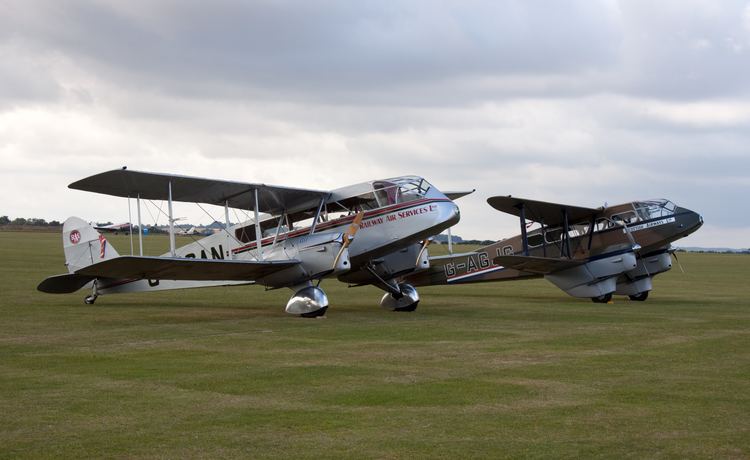
A new four-seat Dragon was delivered in 1933 to the Royal Flight for use by the Prince of Wales. It was sold in 1935. It was later pressed into service by the Royal Australian Air Force during the Second World War.
A special aircraft named Seafarer was built for Amy Johnson (a pioneering English aviator) and her husband Jim Mollison (a famous Scottish pioneer aviator) to make an attempt at the world long distance record. It had a strengthened landing gear and the cabin had extra fuel tanks. It was intended to fly from New York to Baghdad, Iraq, but at their first attempt at a transatlantic flight from Croydon Airport in South London to the United States on 8 June 1933 the landing gear collapsed. After repairs Seafarer left Pendine Sands in South Wales and arrived at Bridgeport, Connecticut in the United States 39 hours later. However, on landing the aircraft turned over and was damaged.
The engines and fuel tanks were recovered from Seafarer and used in another Dragon named Seafarer II. After three attempts to take off from Wasaga Beach, Ontario, Canada for Baghdad, Iraq, the attempt was abandoned and the aircraft was sold. On 8 August 1934, the new owners, James Ayling and Leonard Reid, took off in the Dragon, renamed Trail of the Caribou, from Wasaga Beach in another attempt at the distance record. Although the intended target was Baghdad, throttle problems forced the attempt to be abandoned, and Trail of the Caribou landed at Heston Aerodrome, an airfield west of London, in Middlesex, UK after 30 hours 55 minutes, making the first non-stop flight between the Canadian mainland and Britain.
The inaugural service of the Irish Airline Aer Lingus was provided by a DH.84 Dragon, registration EI-ABI and named Iolar, which means "Eagle" in the Irish language. For the 50th anniversary of the airline in 1986, a replacement Dragon was acquired, restored, reregistered as EI-ABI and repainted as the Iolar.
Following the War, surviving DH.84s passed into commercial service, but only three are still flying today.
Accidents and incidents
Variants
Operators
♠ Original operators
Military operators
Civil Operators
Specifications (DH.84 Dragon 1)
Data from de Havilland Aircraft since 1909
General characteristics
Performance
